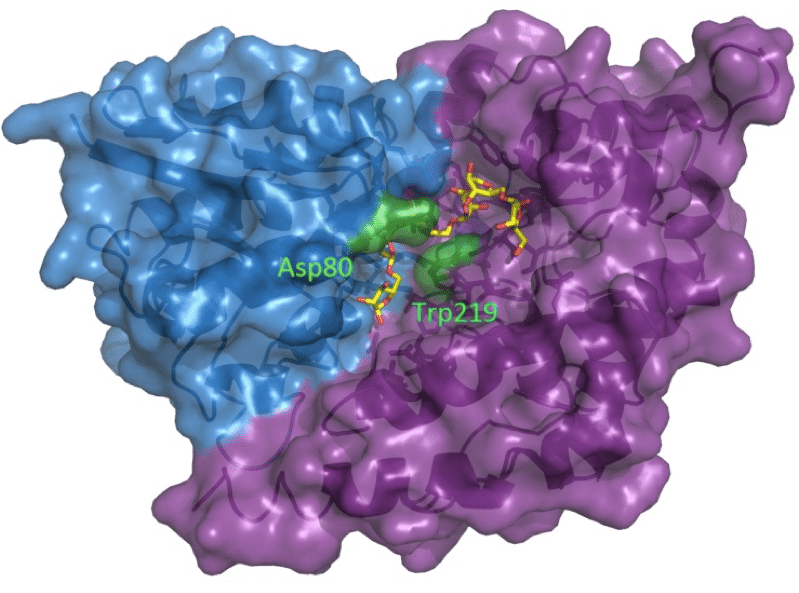
Substrate Specificity and Transport Mechanism Revealed for an ABC Transporter Binding Protein for Arabino-Oligosaccharides
2The Department of Biotechnology and Food Engineering, Technion-Israel Institute of Technology, Haifa, Israel
ABC importers are membrane proteins responsible for the transport of nutrients into the cells of prokaryotes. The structures of ABC transporters vary, yet all contain four conserved domains: two nucleotide binding domains (NBDs), which bind and hydrolyze ATP, and two transmembrane domains (TMDs), which help translocate the substrate. ABC importers are also dependent on an additional protein component, a high-affinity binding protein (BP) that specifically binds the target ligand for delivery to the appropriate ABC transporter. AbnE is a BP belonging to the ABC importer for arabino-oligosaccharides (the AbnEFJ system) in the Gram-positive bacterium Geobacillus stearothermophilus. Using isothermal titration calorimetry (ITC), purified AbnE was shown to bind medium-sized arabino-oligosaccharides (in the range of arabino-triose to arabino-octaose), all with Kd values in the nanomolar range. We describe herein the 3D structure of AbnE in its closed conformation, in complex with a range of arabino-oligosaccharide substrates (Figure). These structures provide the basis for the detailed structural analysis of the AbnE-sugar complex, and especially the AbnE-substrate interactions responsible for the protein specificity. Together with complementary small angle X-ray scattering (SAXS) experiments and normal mode analysis (NMA), these data provide key information for understanding the transport mechanism involving the interaction of AbnE with the AbnFJ transporter, information that may also apply more generally to other related transmembranal transport systems.

Powered by Eventact EMS